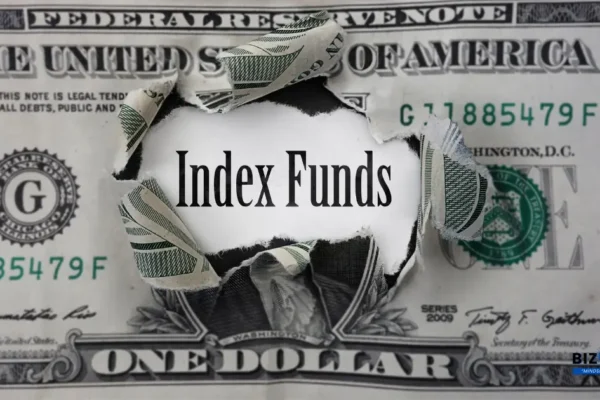

How to Start Investing in Cryptocurrency: A Beginner’s Guide for Americans in 2025
The cryptocurrency landscape in America has never been more promising—or more complex. As we journey through 2025, we stand at the dawn of a historic transformation in how digital assets are treated by both government and financial institutions. Gone are the murky, uncertain days when cryptocurrency existed in a legal grey zone. Under President Trump’s administration, the United States has adopted a strong pro-crypto approach, highlighted by the landmark GENIUS Act, which delivers the long-sought regulatory clarity for retail investors in the cryptocurrency space.
If you’ve been sitting on the sidelines, hesitant to wade into these waters, let me assure you: you’re not too late. In fact, you may have arrived at the perfect moment. The once “Wild West” nature of cryptocurrency is giving way to a more mature and regulated ecosystem—one that still brims with opportunity yet now offers everyday Americans a safer, more user-friendly environment than ever before. No longer must you feel as though you’re breaking new ground in uncharted territory; today, you can step in with confidence, knowing the playing field finally has guardrails in place.
That said, investing in cryptocurrency is not the same as buying stocks, bonds, or mutual funds. It’s an entirely different beast, governed by unique protocols, filled with rapid price swings, and brimming with nascent technologies that defy conventional wisdom. The rules of the game are still being written, the risks are distinct, and the rewards can be extraordinary—but only if you understand the terrain. That’s why this guide has been crafted: to walk you through the latest 2025 developments and real-world American experiences, arming you with the knowledge and confidence to chart your own cryptocurrency journey.
Understanding why now matters is the first step. Earlier this year, the Trump administration launched “Project Crypto,” an initiative spearheaded by SEC Chair Paul Atkins that marks the most consequential regulatory pivot in the U.S. digital asset arena to date. For the first time, federal agencies are collaborating to enable rather than hinder cryptocurrency innovation, signaling a shift from adversarial oversight to constructive engagement.
At the same time, the bipartisan GENIUS Act, signed into law in July 2025, has introduced a uniform federal framework for stablecoins—cryptocurrency assets pegged to the U.S. dollar that are increasingly used in everyday transactions. This legislation isn’t merely bureaucratic fine-print; it’s a genuine game-changer, providing the legal scaffolding necessary for stablecoins to flourish in mainstream finance—and for you, the American investor, to participate with both ambition and peace of mind.
What Exactly Is Cryptocurrency?
Cryptocurrency is best understood as a wholly digital form of money: units of value created, exchanged, and stored exclusively online without the need for physical bills or coins. While traditional dollars in your bank account exist as entries in a ledger held and updated by banks and ultimately overseen by the Federal Reserve, cryptocurrency relies on blockchain networks—decentralized digital ledgers maintained and verified by thousands of independent computers across the globe. This networked approach means that no single institution, government, or intermediary controls the currency; instead, trust is distributed among all participants in the system, making it inherently resistant to censorship, fraud, and centralized manipulation.
At the core of blockchain’s magic is its immutable record-keeping. Every transaction is grouped into a “block” and cryptographically linked to the previous block, creating a permanent, tamper-proof chain. When someone sends or receives cryptocurrency, that transaction is broadcast to the network, where miners or validators use computing power to confirm its authenticity. Once confirmed, the new block is added to the chain, ensuring that every participant shares an identical copy of the ledger. This transparency not only bolsters security—since altering any past transaction would require rewriting the entire chain—but also builds a foundation of trust without relying on traditional financial institutions.
Among the thousands of cryptocurrencies that have emerged, Bitcoin stands as the original and most widely recognized. Launched in 2009 by the pseudonymous Satoshi Nakamoto, Bitcoin was conceived as “digital gold,” designed to serve as a scarce, decentralized store of value immune to inflationary pressures from government money printing. Its fixed supply cap of 21 million coins and peer-to-peer architecture make it an attractive hedge against economic uncertainty, much like precious metals have been for centuries. Over time, Bitcoin has evolved from a niche experiment among cryptographers to a mainstream asset held by institutions, corporations, and individual investors alike.
Building on Bitcoin’s breakthrough, Ethereum introduced a new paradigm when it launched in 2015. Rather than focusing solely on currency, Ethereum functions as a programmable blockchain, enabling developers to write “smart contracts”—self-executing agreements that automatically enforce themselves when predefined conditions are met. This innovation has catalyzed the explosive growth of decentralized finance (DeFi), non-fungible tokens (NFTs), and countless blockchain-based applications. By transforming a simple ledger into a dynamic, global computer, Ethereum has expanded our understanding of what digital money platforms can achieve.
Beyond Bitcoin and Ethereum, the broader cryptocurrency ecosystem is rapidly evolving, advancing at an unprecedented pace to reshape the future of digital finance. From privacy-focused coins like Monero to high-throughput networks like Solana, each new project addresses specific challenges—whether it’s speed, scalability, or smart-contract functionality. And while the volatility and speculative excitement often dominate headlines, the underlying blockchain technologies are steadily reshaping how we think about money, contracts, data ownership, and the very architecture of trust in the digital age. As you begin your own journey into cryptocurrency, it’s this blend of technological innovation and financial experimentation that makes the space so compelling—and so transformative.
Choosing Your Cryptocurrency Exchange: Your Gateway to Digital Assets
Your first major decision is where to buy your cryptocurrency. Think of a cryptocurrency exchange like a stock brokerage, but for digital assets. The good news? American investors have access to some of the world’s best and most secure platforms.
Coinbase remains the gold standard for beginners. With over 98 million users and a stellar security record, it’s never suffered a major hack. The platform is FDIC-insured for your dollar deposits up to $250,000, giving you the same protection you’d have at a traditional bank. Yes, you’ll pay higher fees (up to 3.99% for some transactions), but you’re paying for simplicity, security, and peace of mind.
Kraken offers one of the best mixes of low fees and advanced trading features, making it a top choice for both beginner and professional cryptocurrency traders. With over 350 cryptocurrencies available and trading fees as low as 0%, it’s perfect for investors who want more options without breaking the bank. The downside? It has a steeper learning curve and customer service can be slow.
For those just starting out, Robinhood offers the ultimate in simplicity—no trading fees and a familiar interface if you’ve ever bought stocks. However, you’re limited to just 25 cryptocurrencies, and you can’t transfer your cryptocurrency to external wallets.
Setting Up Your Account: The KYC Reality
Every reputable U.S. cryptocurrency exchange requires Know Your Customer (KYC) verification. Yes, you’ll need to share your Social Security number, driver’s license, and sometimes a utility bill or selfie—details that might feel invasive at first glance. But take heart: this process is a vital safeguard, ensuring these platforms comply with federal anti–money laundering laws and collaborate with regulators to build a transparent, trustworthy environment for all of us. The typical turnaround is 24–48 hours, so don’t wait until the last minute—start your verification early to avoid delays in making your first purchase. Once your account is approved, immediately enable two-factor authentication (2FA). With 2FA in place, accessing your account requires both your password and a second layer (like a text message or authenticator app), making it virtually impossible for cybercriminals to slip in unnoticed.
Understanding Cryptocurrency Wallets: Where Your Digital Money Lives
One of the first surprises for new cryptocurrency investors is that buying digital coins on an exchange doesn’t immediately grant you true ownership. The exchange holds your tokens—much like a bank holds your cash—leaving the critical private keys in its custody. While this setup makes trading easier, it contradicts crypto’s fundamental principle: “Not your keys, not your coins,” highlighting the risks of third-party custody.
To reclaim full ownership, you’ll want a wallet. Software wallets, or hot wallets, are applications on your phone or computer that enable you to directly store and manage your private cryptocurrency keys. They’re perfect for everyday transactions—sending a friend a few dollars’ worth of Bitcoin is as easy as tapping a button—but because they’re connected to the internet, they can be vulnerable to hacking. Popular and user-friendly options include Exodus and Coinbase Wallet.
If you’re serious about security, consider a hardware wallet, which looks like a USB drive but is in fact a secure vault for your keys. The Ledger Nano X and Trezor are the industry standards, combining offline storage with military-grade encryption. Even if your computer is compromised, your funds remain untouchable inside the hardware wallet.
As a rule of thumb, start by keeping modest amounts on the exchange for trading and move larger balances to your hardware wallet. If you wouldn’t stroll around town with $1,000 in cash stuffed in your pocket, you shouldn’t leave that value exposed in an online account either. This gradual transition lets you gain confidence and experience in managing your own keys—and peace of mind knowing your cryptocurrency is genuinely under your control.
Your First Investment: The Dollar-Cost Averaging Strategy
Now comes the big question: how much should you invest, and when?
The biggest mistake new investors make is trying to time the market—waiting for the “perfect” moment to buy. Professional traders with decades of experience struggle with market timing, so why would you be any different?
Instead, consider Dollar-Cost Averaging (DCA), the strategy used by 59% of cryptocurrency investors according to Kraken’s survey. DCA means investing a fixed amount regularly, regardless of the price. For example, instead of investing $6,000 all at once, you’d invest $500 every month for 12 months.
Here’s why DCA works so well for cryptocurrency: volatility becomes your friend. When prices drop, your $500 buys more Bitcoin. When prices rise, you buy less. Over time, this smooths out the impact of cryptocurrency’s notorious price swings and often results in a better average price than trying to time the market.
Let’s say you decided to DCA $500 monthly into Bitcoin starting in January. Even through Bitcoin’s dramatic price swings—from $40,000 in January to as low as $25,000 in June, then up to $60,000 in November—your disciplined approach would have accumulated 0.1573 Bitcoin for your $6,000 investment, with an average cost of about $38,152 per Bitcoin.
The Tax Reality: What Every American Cryptocurrency Investor Must Know
Here’s where things get serious. The IRS treats cryptocurrency as property, not currency, which means every transaction—selling, trading, even buying coffee with Bitcoin—can trigger a taxable event.
The tax rates depend on how long you hold your cryptocurrency:
Short-term capital gains from cryptocurrencies held less than one year are taxed as ordinary income, with rates ranging from 10% to 37% based on your income. In contrast, long-term capital gains on assets held over one year enjoy preferential tax rates of 0%, 15%, or 20%.
But there’s more: if you earn cryptocurrency through staking, mining, or airdrops, that’s considered ordinary income at the fair market value when you received it.
Important changes for 2025: Starting January 1st, all cryptocurrency exchanges must report your transactions to the IRS using the new Form 1099-DA. The days of cryptocurrency flying under the tax radar are officially over. The IRS has also hired specialized cryptocurrency enforcement teams and has begun sending letters to thousands of cryptocurrency investors who may not be compliant.
My advice? Start tracking your transactions now. Use software like Koinly or CoinTracker to automatically import your trades and calculate your tax liability. Don’t wait until April to figure this out.
Building Your Crypto Portfolio: Beyond Bitcoin
Bitcoin may be the undisputed king of digital assets—often likened to “digital gold” for its pioneering role and value store—but anchoring your entire portfolio to a single coin is a recipe for unnecessary risk. Just as financial advisors recommend diversifying across stocks, bonds, and real estate, smart crypto investors spread their capital across different blockchain projects and asset types. This approach smooths out the inevitable bumps in cryptocurrency markets, allowing you to participate in growth opportunities while managing downside exposure.
At the heart of this diversification strategy are your Core Holdings, which should comprise roughly 60–70 percent of your portfolio. Here, you’ll invest in blue-chip cryptocurrencies, primarily Bitcoin and Ethereum, known for their stability and market leadership. Bitcoin’s scarcity and storied track record make it the natural bedrock, while Ethereum’s programmable blockchain powers a vast ecosystem of decentralized applications, from lending platforms to NFTs. These two assets have the deepest liquidity, the broadest institutional support, and the most robust developer communities, giving them a resilience that newer tokens often lack.
Once your core is in place, you can allocate about 20–30 percent to Growth Holdings—projects with strong fundamentals and clear use cases but more upside potential (and commensurate risk) than Bitcoin or Ethereum. Popular names in this category include Solana, renowned for lightning-fast transaction speeds and an emerging NFT market; Polygon, which alleviates congestion and high fees on Ethereum; and Chainlink, the foremost oracle network that connects blockchains with real-world data sources. These platforms are at the forefront of innovation, and successful adoption could drive meaningful gains for investors who get in early.
For the most adventurous portion of your portfolio—around 5–10 percent—consider Speculative Holdings. This slice is where you can explore cutting-edge or niche projects, such as AI-powered tokens that leverage machine learning on-chain, or real-world asset tokenization platforms that convert physical assets like real estate or fine art into tradeable digital tokens. While these opportunities carry higher failure risk, they also offer the possibility of outsized returns if they resonate with broader market trends.
Finally, don’t overlook the importance of Stablecoins, which should occupy about 5–10 percent of your allocation. These dollar-pegged tokens—USDC and USDT among the most popular—serve as your portfolio’s cash equivalent. They provide liquidity and stability, allowing you to quickly move in and out of positions without needing to convert back to U.S. dollars. In turbulent markets, holding stablecoins can preserve capital and give you dry powder to seize buying opportunities when prices dip.
By thoughtfully distributing your capital across these four categories—Core Holdings, Growth Holdings, Speculative Holdings, and Stablecoins—you’ll build a balanced, resilient crypto portfolio capable of weathering volatility and capturing the full spectrum of opportunities in today’s dynamic digital asset landscape.
Security: Protecting Your Digital Wealth
Cryptocurrency security isn’t optional—it’s absolutely critical. Unlike traditional banking, there’s no FDIC insurance for most crypto holdings, and transactions are irreversible.
Essential security practices for cryptocurrency:
- Never share your private keys or seed phrases with anyone to ensure the security of your cryptocurrency assets
- Use unique, strong passwords for all crypto-related accounts
- Enable 2FA on every platform you use
- Always double-check wallet addresses before sending transactions—entering even one incorrect character can result in irreversible loss of your funds
- Be skeptical of “too good to be true” offers—if someone promises guaranteed returns or asks you to send crypto first, it’s a scam
Red flags to watch for investing in cryptocurrency:
- Unsolicited investment advice on social media
- Pressure to act quickly or “invest now before it’s too late”
- Requests to download unknown software or click suspicious links
- Anyone asking for your private keys or seed phrase
The Emotional Journey: Preparing for the Psychological Challenge
Let me be honest with you: cryptocurrency investing is an emotional rollercoaster. I’ve seen Bitcoin crash 80% from its highs, and I’ve watched friends panic-sell at the worst possible times. I’ve also seen incredible success stories from people who stayed disciplined through the chaos.
The key to success isn’t avoiding emotions—it’s managing them. Set clear investment goals and stick to your strategy regardless of daily price movements. Cryptocurrency markets operate 24/7 nonstop, but constantly checking prices can quickly become overwhelming and stressful.
Practical tips for emotional management:
- Set specific times to check your portfolio (maybe once a week)
- Create clear rules for when you’ll take profits or cut losses
- Never invest money you can’t afford to lose
- Join reputable crypto communities for support and education, but be wary of investment advice from strangers
Looking Ahead: The Future of Cryptocurrency in America
As we look toward the rest of 2025 and beyond, the cryptocurrency landscape in America is more promising than ever. The regulatory clarity we now have, combined with increasing institutional adoption and technological improvements, suggests we’re entering a new phase of mainstream crypto adoption.
Emerging trends to watch:
- Central Bank Digital Currencies (CBDCs) – The digital dollar is coming
- Real-world asset tokenization – Stocks, bonds, and even real estate moving onto blockchains
- AI-powered cryptocurrency – Projects using artificial intelligence for various applications
- Layer 2 scaling solutions – Technologies making Ethereum faster and cheaper
Your Next Steps: Getting Started Today to invest in cryptocurrency
Ready to begin your cryptocurrency journey? Here’s your action plan:
- Choose an exchange based on your experience level (Coinbase for beginners, Kraken for lower fees)
- Complete the verification process and secure your account with 2FA
- Start small with an amount you’re comfortable potentially losing
- Set up a DCA strategy for consistent investing
- Begin tracking transactions for tax purposes from day one
- Consider a hardware wallet once your holdings reach a meaningful amount
- Educate yourself continuously—the crypto space evolves rapidly
Don’t worry about learning it all at once—expertise takes time. The most successful cryptocurrency investors I know started small, stayed consistent, and never stopped learning. They understood that cryptocurrency isn’t just about making money—it’s about participating in a technological revolution that’s reshaping our financial system.
The opportunity is real, the regulatory environment is favorable, and the tools for safe investing have never been better. But success in crypto, like any investment, requires patience, discipline, and a willingness to learn from both successes and mistakes.
The future of money is digital, and it’s happening now. The question isn’t whether you should get involved—it’s how quickly you can educate yourself and start participating responsibly in this historic transformation.
Conclusion
As you reach the end of your first foray into cryptocurrency, remember that this journey is as much about mindset as it is about markets. The innovations we’ve discussed—from the immutable transparency of blockchain ledgers to the programmable potential of smart contracts—are reshaping global finance. But true success in crypto investing hinges on discipline: setting clear goals, sticking to your strategy, and resisting the siren song of short-lived hype. By approaching digital assets with a blend of curiosity and caution, you position yourself to capture long-term potential without succumbing to emotional pitfalls.
Regulatory clarity in 2025 has ushered in an era of unprecedented opportunity for American investors. Landmark initiatives such as “Project Crypto” and the GENIUS Act have transformed a once-fragmented patchwork of state rules into a cohesive federal framework. This maturation provides a firmer foundation upon which to build your portfolio. Yet with clearer rules come greater responsibility: diligent KYC compliance, robust security practices, and scrupulous tax reporting are no longer optional extras but essential components of a compliant, forward-looking crypto strategy.
Diversification remains your most powerful tool for managing risk in this volatile ecosystem. A well-constructed portfolio—anchored by Bitcoin and Ethereum, complemented by promising growth projects, and balanced with speculative allocations and stablecoins—can help you navigate extreme price swings while still participating in the space’s boundless innovation. Likewise, adopting disciplined approaches such as dollar-cost averaging and hardware wallet custody ensures that your journey is both methodical and secure, reducing the likelihood of costly mistakes born of emotion or negligence.
Finally, always remember that cryptocurrency is still in its adolescence. The next great breakthroughs—whether in decentralized finance, tokenized real-world assets, or digital identity—are likely just over the horizon. Stay informed, stay humble, and stay curious. By combining rigorous research with prudent risk management and a long-term perspective, you’ll be well-equipped to thrive in the dynamic world of crypto investing. The revolution is underway, and now is your moment to join it—prepared, confident, and ready for whatever comes next.
Disclaimer: This article is for educational purposes only and should not be considered financial advice. Cryptocurrency investments are highly volatile and speculative. Always seek advice from a qualified financial advisor and never invest more than you can afford to lose.
To keep your knowledge base updated bookmark our crypto category page, and read all our upcoming articles.








